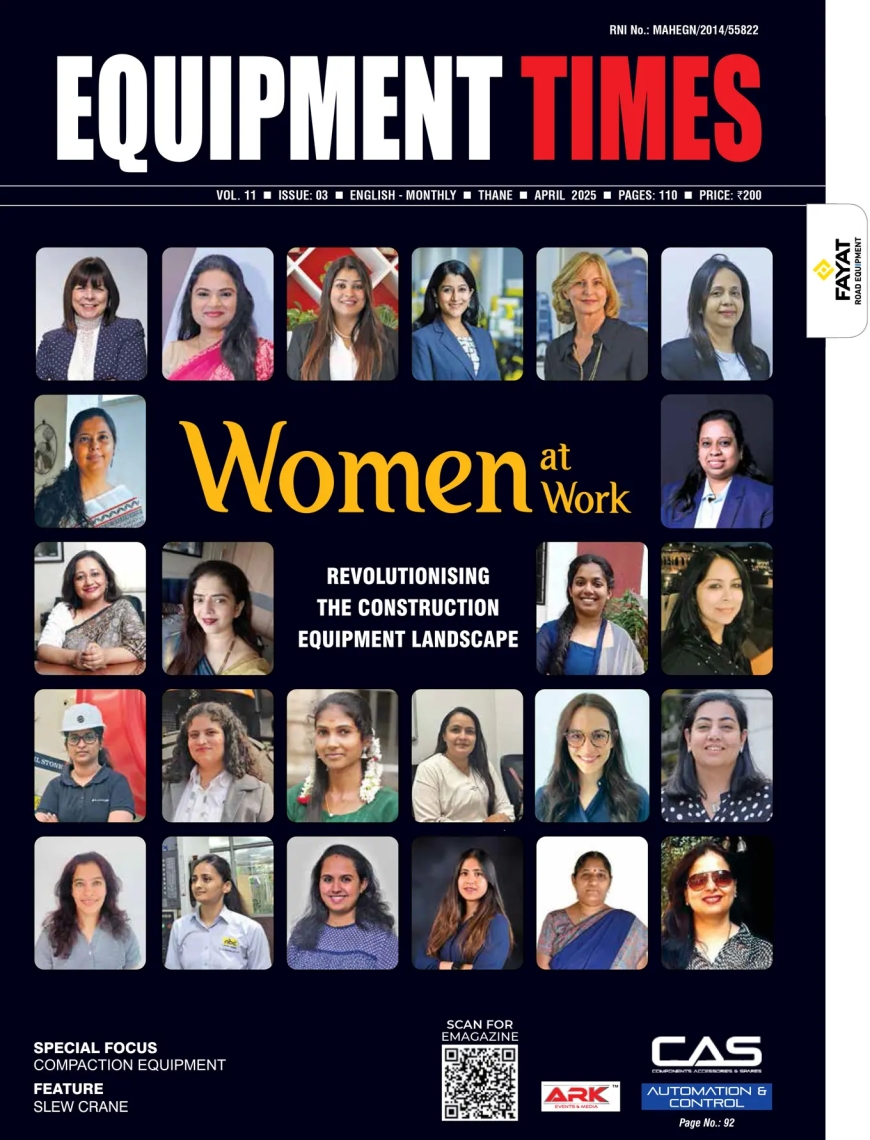BLUEPRINT FOR PROGRESS
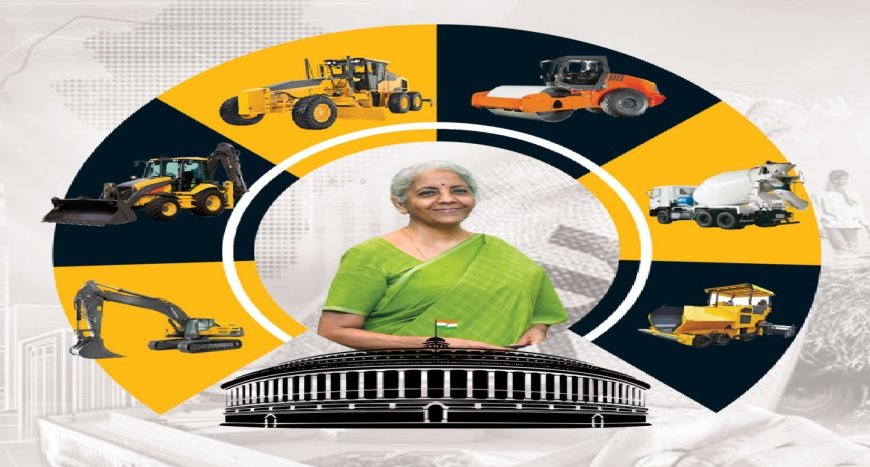
Union Budget Unveils Trajectory of Exponential Growth Opportunities for Construction Equipment Industry.
Equipment Times looks into market for construction and mining equipment in India, specific budget provisions that has a direct impact on the construction equipment manufacturing sector, budget influencing the growth and development of the construction equipment industry in India, policy measures or incentives in the budget that will benefit the construction equipment manufacturing sector, bottlenecks in the industry and overcoming those challenges.
Building on the massive tripling of the capital expenditure outlay in the past four years, which has resulted in a huge multiplier effect on economic growth and employment creation, the Central government has now increased the outlay for the next financial year by 11.1% to Rs 11,11,111 crore.
This would be 3.4 percent of the GDP, Finance Minister Nirmala Sitharaman stated in the interim budget speech. About Rs 2.78 lakh crore has been allocated to the Ministry of Road Transport and Highways, while another Rs 2.55 lakh crore has been earmarked for the Ministry of Railways. The development is likely to further give an impetus to infrastructure development in the country, thereby acting as a demand booster for the commercial vehicle and construction equipment industry.
The minister, in her speech, highlighted three major economic railway corridor programmes that will be implemented. These include energy, mineral, and cement corridors, port connectivity corridors, and high-traffic density corridors. She added that these projects have been identified under the PM Gati Shakti for enabling multi-modal connectivity. “They will improve logistics efficiency and reduce costs,” Sitharaman said in her speech.
“Together with dedicated freight corridors, these three economic corridor programmes will accelerate our GDP growth and reduce logistic costs,” she added.
Moreover, forty thousand normal rail bogies will be converted to the Vande Bharat standards to enhance the safety, convenience, and comfort of passengers. In the upcoming financial year (FY25), the Indian government aims to maintain its emphasis on rapid infrastructure growth, particularly within the Ministry of Road Transport and Highways (MoRTH). The recently announced budget outlines a strategic increase in capital expenditure allocations, specifically designed to expedite road construction and complete ongoing projects under the Bharatamala I initiative.
The capital allocation for MoRTH in the FY25 budget has been raised to Rs 2.72 trillion, up from the previous fiscal year’s budgeted level of Rs 2.58 trillion. This targeted financial boost is intended to support the construction of highways and access-controlled expressways nationwide. A substantial portion of the increased allocation for FY25 will be directed toward meeting the capital expenditure requirements of the National Highways Authority of India (NHAI), the primary agency responsible for highway construction. NHAI, having relied solely on-budget funding for the past three years due to a moratorium on market borrowings, is set to benefit from this fiscal provision.
While the interim budget has announced a higher capex for MoRTH, further revisions are anticipated when the full budget is presented by the new government later in the year. MoRTH has indicated the potential for capex to reach Rs 3.3 trillion in FY25.
This budgetary adjustment for MoRTH builds upon the increased capex in FY24, where allocations rose from Rs 206,000 crore (revised estimate) in FY23 to Rs 258,000 crore in FY24. Before that, there was an 82% increase in capex for road and highway from Rs 113,000 crore (actuals) in FY22.
Analyzing the expenditure trend, it is evident that MoRTH’s focus has shifted towards capital spending in recent years. In 2021-22, capital expenditure stood at Rs 113,000 crore, while revenue expenditure was just over Rs 10,000 crore. The ratio between revenue and capital expenditure has shifted significantly since 2014-15, with over 96% of the ministry’s spending budgeted for capital expenditure in 2023-24.
The quality of expenditure has also seen improvement, with a substantial portion of funds going to NHAI. Out of the total allocation of Rs 123,500 crore in 2021-22, Rs 57,000 crore went to NHAI, marking a 35% increase from the previous year. This figure rose to Rs 142,000 crore and Rs 162,000 crore in FY23 and FY24, respectively.
Despite challenges posed by the COVID-19 pandemic and a prolonged monsoon season, the length of national highways has increased by about 60% in the last nine years, reaching over 145,000 km. The government aims to extend this to 200,000 km by FY25.
NHAI, with the additional funding, plans to increase highway construction from 37 km per day in 2020-21 to over 40 km per day in the next fiscal year. The overall goal is aligned with the National Infrastructure Pipeline, which has allocated Rs 111 trillion ($1.4 trillion) for FY 2019-25, with the roads sector expected to account for 18% of capital expenditure during this period.
Leaders speak…
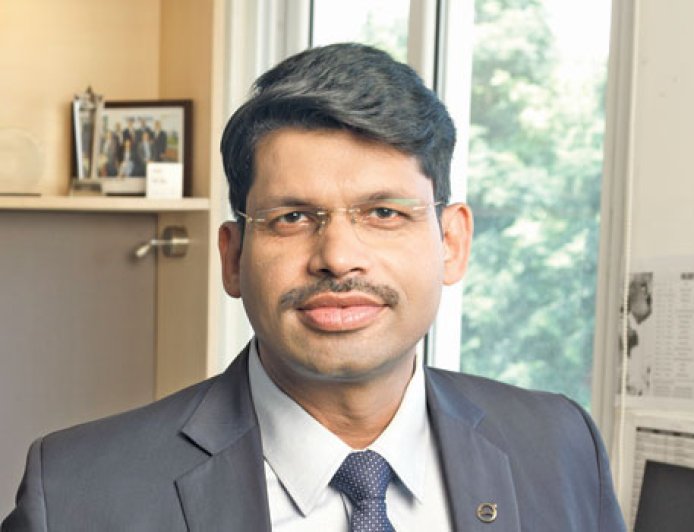
Dimitrov Krishnan, Managing Director, Volvo CE India, said, “The Interim Budget paints a promising picture for the construction industry. Investing in infrastructure at a record pace, coupled with a 11.1% increase in capital expenditure, creates a fertile ground for growth. Moreover, initiatives like developing iconic tourist destinations and boosting island connectivity present exciting opportunities for specialized construction equipment. We are confident that by collaborating with the government and industry stakeholders, we can play a vital role in building a 'Prosperous Bharat' with cutting-edge infrastructure and a sustainable future.”

Arvind K Garg, Senior Vice President & Head, L&T Construction & Mining Machinery, said, “The budget earmarks a significant increase in capital expenditure to 3.4% of GDP, signifying the Government’s strong commitment to bolstering the country’s infrastructure. This hike in capital expenditure is expected to spur widespread infrastructural projects, directly impacting the demand for construction and mining equipment. The provision of a 50-year interest-free loan to States for capital expenditure further ensures a consistent demand for equipment necessary for these projects. Particularly noteworthy is the budget’s focus on major economic corridor programs under PM Gati Shakti, which aim to enhance logistics efficiency and reduce costs, necessitating extensive construction and mining activities. Similarly, the PM Awas Yojana (Gramin) targets rural housing and infrastructure development, expanding the demand for construction equipment in rural markets.”

Jaideep Shekhar, VP & Managing Director - APAC & EMEAR, Terex India, “As we step into 2024, Terex India foresees robust growth in the construction equipment sector. The government’s renewed focus on infrastructure development, seen in initiatives like road construction and urban development, fuelled a 15% growth in the previous year. This momentum is expected to continue with the proposed Rs 10 lakh crore capital expenditure (capex) plan, driving sustained expansion. Despite uncertainties stemming from upcoming elections, global challenges, and rising prices, Terex India maintains an optimistic outlook, driven by adaptability and resilience. The crushing and screening industry, supported by Government investments, is experiencing consistent growth, reinforced by India’s youthful population and the focus on self-reliance. Terex India, committed to customer-centricity and sustainability, is actively contributing to the country’s development. In 2024, we are excited to introduce new products in recycling solutions, lifting equipment, and hybrid-powered crushers and screeners. These additions underscore our dedication to minimizing environmental impact while embracing technological advancements. Anticipating a potential late fiscal surge and new emission norms in April 2024, Terex India prioritizes adaptability and progress, positioning itself to navigate changes effectively. Moreover, our ongoing facility expansion underscores our dedication to fostering growth and sustainability in the construction and recycling industries.”

Sanjeev Bajaj, Chief Officer, Escorts Kubota, said, “Over the past year, the industry has experienced remarkable growth, approximately 35% in our served sector. This surge surpasses anything we’ve witnessed before; even the previous peak in FY19 has been comfortably surpassed. As of January, we’ve already exceeded last year’s overall numbers in the CE industry, reaching an impressive 130,000. Encouragingly, we anticipate this momentum to persist. Several factors contribute to our optimism. The government’s spending and a heightened sense of urgency are currently at their peak. The latest budget gives no indication of a slowdown; in fact, spending is on the rise. Last year’s capital expenditure budget was 33% higher than the previous year, and this year sees an additional 11% increase from last year. This consistent upward trend is a positive sign. Within the industry, there is widespread positivity and a prevailing sentiment that we are heading towards a stable government. The government has already projected itself as a long-term and stable force with a strong vision for infrastructure development. In the near term, I foresee no disruptions to the industry’s momentum; it appears set to continue its upward trajectory.”
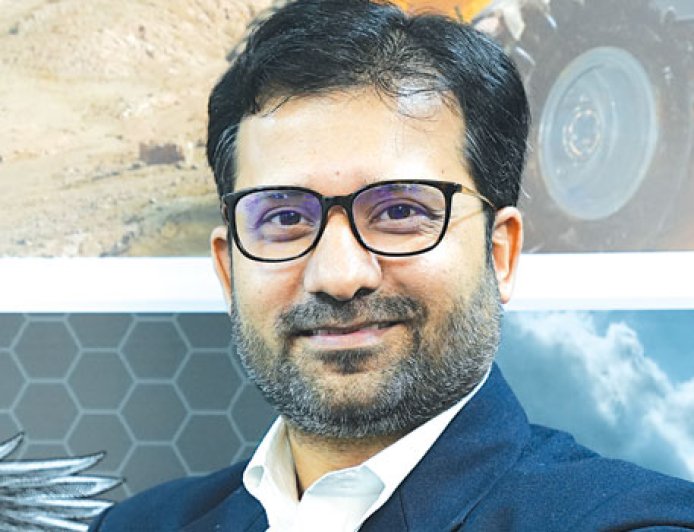
Shalabh Chaturvedi, Managing Director, CASE Construction Equipment, India & SAARC, said, ““With the decision to increase Capex by ~11% to ~Rs 11 lakh crore, representing 3.4% of the GDP, for the fourth consecutive year, the government is reinforcing their focus on sustainable long-term growth, enhancing the nation’s infrastructural backbone. The introduction of the three major railway corridors and the expansion of airport facilities in the country is a welcome move in the direction of improving logistics as a GDP growth lever. Key rail infrastructure projects, including Metro Rail and Namo Bharat, expanding to more cities, convey a clear emphasis on connecting rural to urban Bharat. Furthermore, new initiatives to improve port connectivity, infrastructure, and facilities will open up opportunities for job creation while boosting tourism. It is a well-rounded budget that demonstrates the government’s continued emphasis on important sectors.”
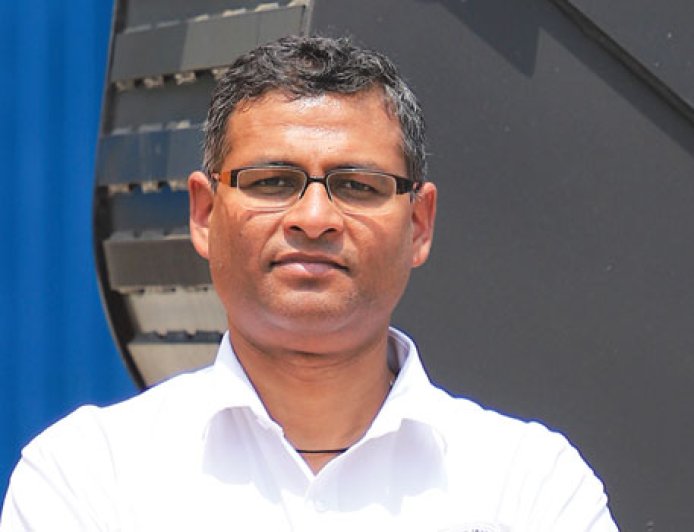
Puneet Vidyarthi, Head of Marketing & Business Development – India & Saarc, Case Construction Equipment, said, “This year’s budget is a people-centric budget with a solemn assurance of collective prosperity and inclusive development. The Direct Benefit Transfer provided by the government to farmers is a strong step that benefits over 11 crore farmers every year. The continued support in providing ‘pakka houses’ in rural India through the PM Awas Yojana is a step in the right direction. Moreover, the Deen Dayal Upadhyaya Grameen Kasuhalya Yojana guarantees high quality skill training opportunities for the rural poor to secure a better future. India is home to over 200 million artisans and the sector is the second largest rural employer after agriculture. The continuity of this Yojana not only benefits the artisan community but is also a continuum of Bharat’s rich art and craft culture.”
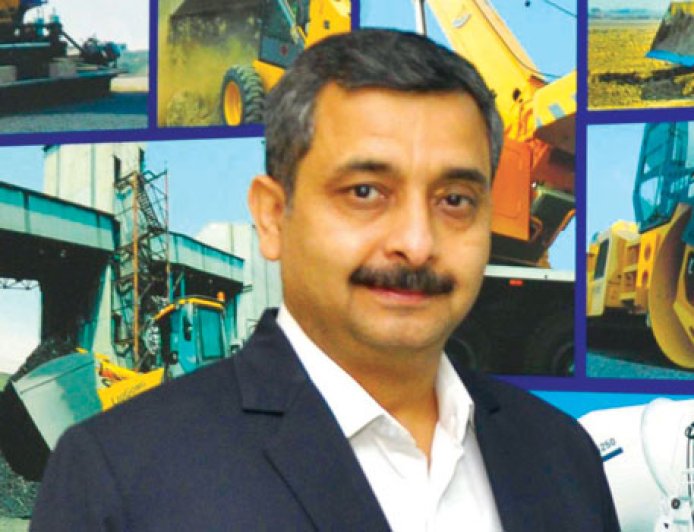
Nischal Mehrotra, Senior Vice-President (Sales & Marketing), LiuGong India, said, “As evident from the government’s substantial investment of 11,000 crore, they are embarking on infrastructure projects focused on roads. We hold a positive outlook considering the scarcity of roads in India. The need to cover distances of 20 to 40 kilometers daily underscores the demand. Road projects entail a comprehensive array of equipment beyond just graders and compactors, encompassing loaders and a complete set. Fortunately, we boast an extensive range of products, and we anticipate introducing pavers shortly. Clients seeking road solutions can rely on us for a complete package, covering everything from mining to paving.”
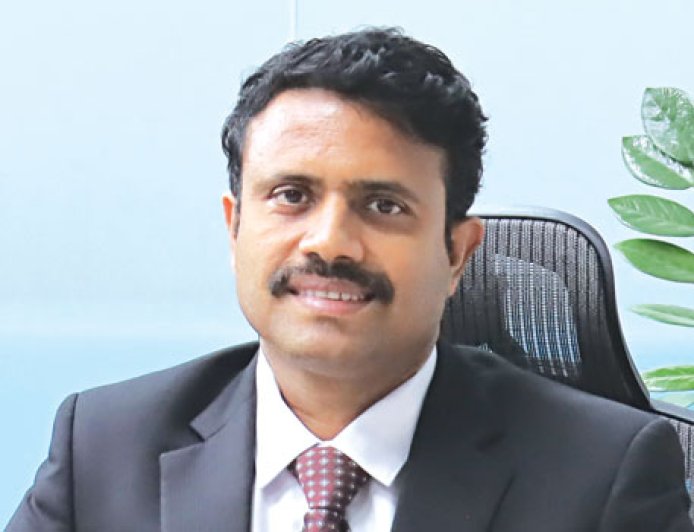
Williams R. J., Managing Director, Hailstone Innovations, said, “The interim budget has specific provisions for the Construction Equipment industry. The increased outlays for capital expenditure and promotion of green energy particularly caught my attention. Steps have been announced to attract more foreign investments and that is good news for the sector. It has been announced that the government will launch a scheme to help deserving sections of the middle class “living in rented houses, or slums, or chawls and unauthorized colonies” to buy or build their own houses. This will benefit the construction equipment industry.”
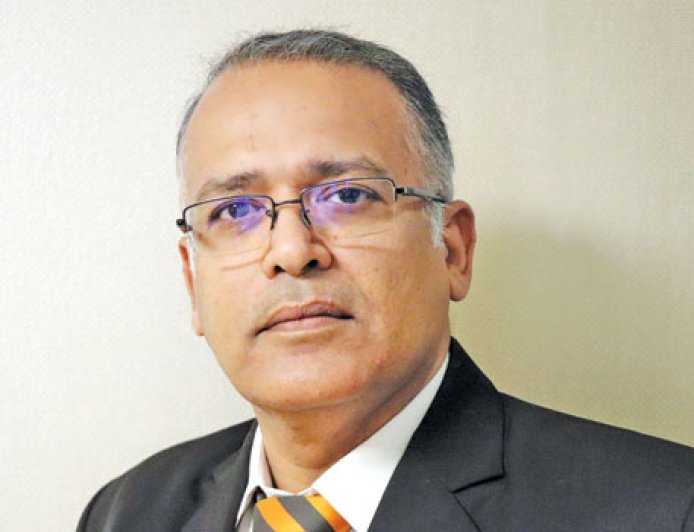
Manish Mathur, CEO – Cranes, Action Construction Equipment (ACE), said, “The budget presents a positive outlook, especially considering its interim nature. The certainty of the initiatives announced remains unclear, however, there is a high probability of the current Government’s determination to carry them out. We anticipate continuous momentum through substantial investments in infrastructure and manufacturing sectors. Our business is heavily reliant on both these industries, with 40-50% of our resources dedicated to infrastructure and the remainder tied to manufacturing. Overall, we maintain an optimistic stance and expect a strong Compound Annual Growth Rate (CAGR) of at least 15 to 18% over the upcoming 3-4 years.”

Rakesh Modi, Chairman, Mtandt Group, said, “Looking at the current landscape of India’s construction and mining equipment market, we envision a trajectory of exponential growth, particularly within the construction sector, over the next decade. India’s delayed development has given us a unique opportunity to approach construction and mining with heightened responsibility, focusing on sustainability and environmental consciousness. Our commitment to constructing and mining in a greener, more sustainable manner aligns perfectly with the evolving ethos of the industry in India.”
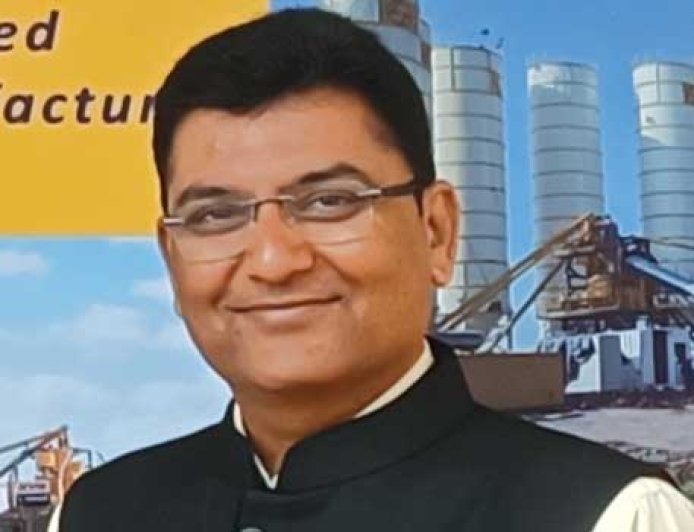
Kalpesh Soni, Vice President Marketing, KYB Conmat, said, “To meet India’s aim of reaching a US$ 7 trillion economy by 2030, infrastructure development is the need of the hour. The market for construction equipment products in India has shown significant potential and growth prospects. Several key factors contribute to the positive outlook for this market. India has many ongoing and planned infrastructure development projects, which includes roads, bridges, airports, metro systems, and smart cities, bullet train project etc. These projects drive the demand for construction equipment. India’s urban population continues to grow, leading to increased demand for residential and commercial construction. This, in turn, fuels the need for construction equipment. Government initiatives like “Make in India”, “Atmanirbhar Bharat”, Production linked incentive (PLI) schemes and focus on infrastructure projects like Bharatmala, Sagarmala, new Industrial Corridors etc have encouraged domestic manufacturing and investments in the construction equipment sector. The construction industry in India is experiencing a significant boom, driven by private and public investments in real estate, commercial spaces, and industrial projects. Advancements in construction equipment technology, such as telematics, IoT integration, and automation, have improved efficiency and productivity in the construction sector. With an 11.1% increase in the capital expenditure outlay for 2024-2025, the government’s direction towards creating capital assets is clearly visible. The government is putting major focus on the Infrastructural development like Railways, energy, mineral & cement corridors, port connectivity corridors, and high traffic density corridors etc. The “Smart Cities Mission” and “Housing for All” programmes have also benefited from these initiatives. From all these developments, the demand for Construction equipment is bound to be ever increasing in nature.”








